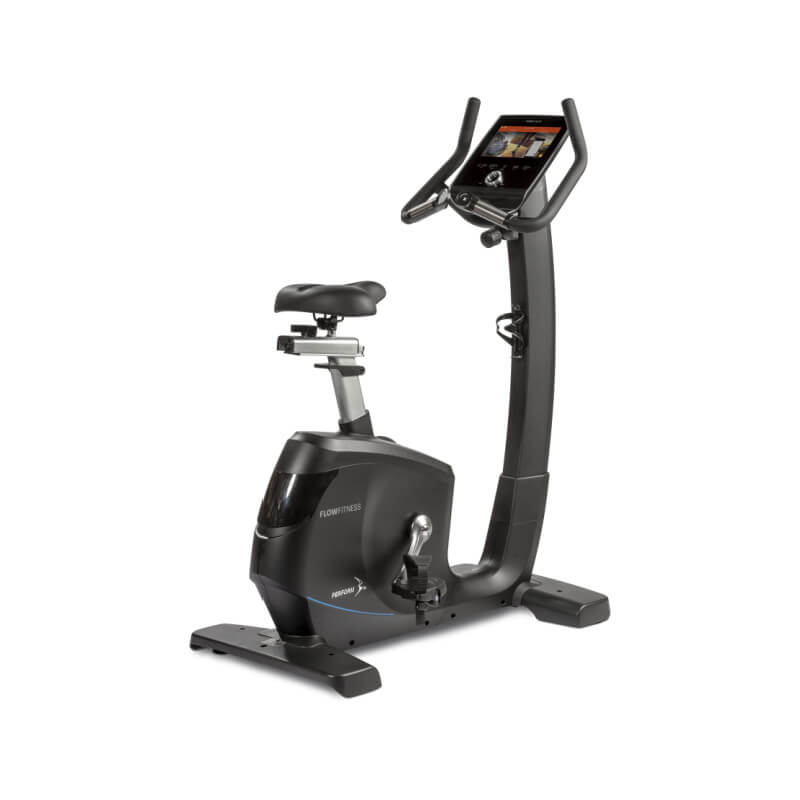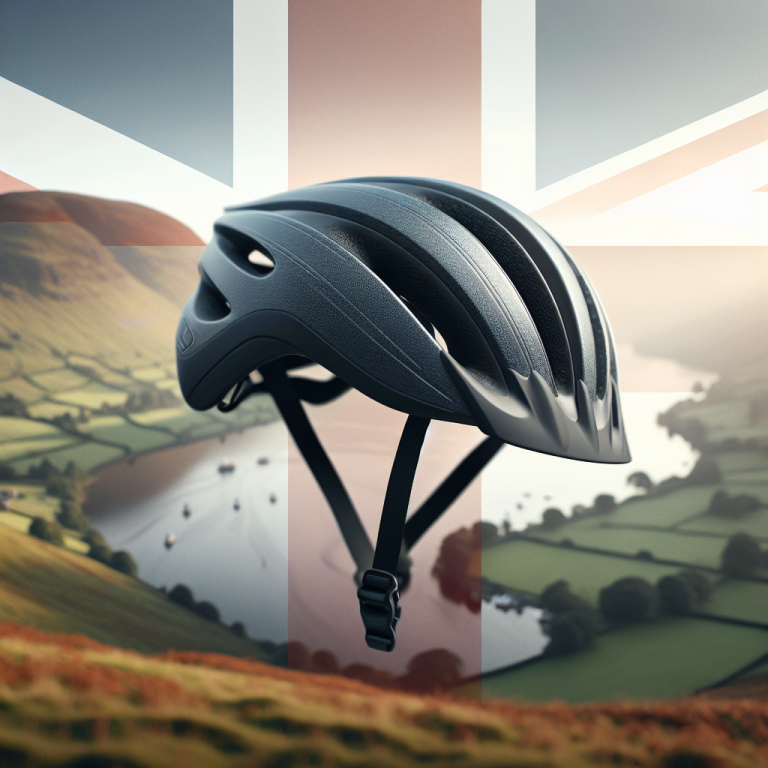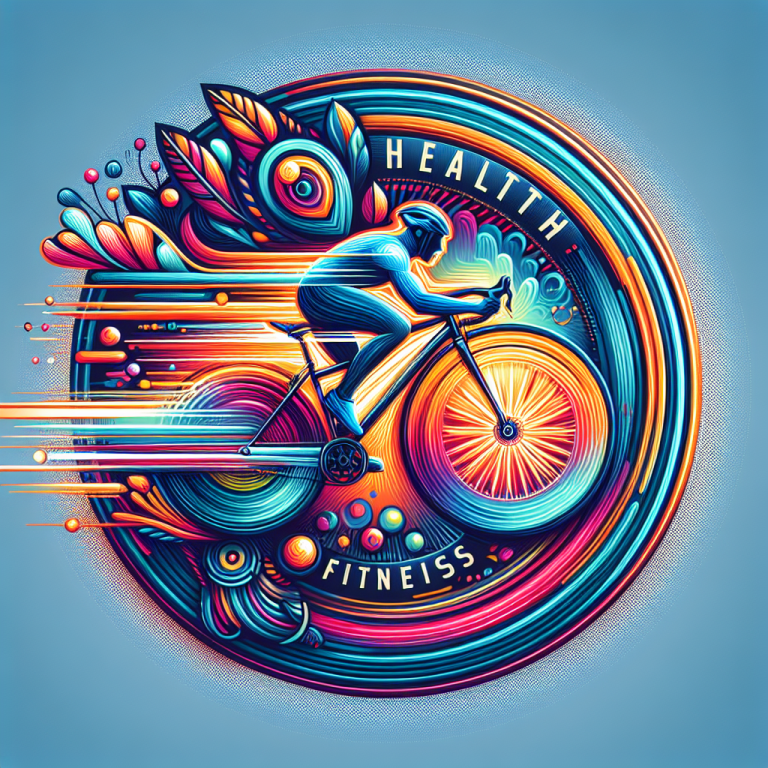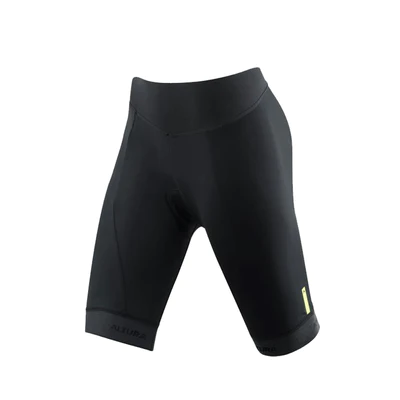Are you a beginner looking to kickstart your fitness journey with cycling? Look no further! In this article, we will explore the world of cycling fitness for beginners, providing you with valuable tips and insights to help you get started on the right track. From choosing the right bike to developing a training plan that fits your needs, we’ve got you covered. Get ready to pedal your way to a healthier and more active lifestyle!
Table of Contents
ToggleChoosing the Right Bike
Types of Bikes
When it comes to choosing a bike, there are several different types to consider. The most common types of bikes are road bikes, mountain bikes, hybrid bikes, and urban bikes. Road bikes are designed for paved roads and are great for covering long distances quickly. Mountain bikes are built to handle off-road and rough terrain, making them perfect for trails and adventurous rides. Hybrid bikes combine the best features of both road bikes and mountain bikes, making them versatile and suitable for various terrains. urban bikes, on the other hand, are designed for casual, relaxed rides in a more upright position.
Understanding Bike Fit
One of the most important aspects of cycling is ensuring that your bike fits you properly. A bike that is the right size and fit will not only increase your comfort but also improve your performance and reduce the risk of injury. The key factors to consider when fitting a bike include your height, leg length, reach, and riding style. It’s crucial to have the correct saddle height, handlebar position, and reach to the handlebars to ensure optimal comfort and efficiency during your rides. If you’re unsure about bike fit, it’s always a good idea to seek the advice of a professional bike fitter.
Considerations for Beginners
As a beginner, there are a few things to keep in mind when starting your cycling journey. Firstly, start with a bike that suits your skill level and riding goals. It’s best to choose a bike that is comfortable and easy to handle, such as a hybrid or urban bike. Secondly, take it slow and gradually increase your ride duration and intensity. Pushing yourself too hard from the beginning can lead to burnout or injury. Lastly, don’t forget to enjoy the process! Cycling is not only a great way to stay fit but also an opportunity to explore new places and enjoy the outdoors.
Essential Bike Accessories
To ensure a safe and enjoyable cycling experience, there are a few essential accessories that every cyclist should consider. A properly fitted helmet is a must to protect your head in case of a fall or accident. Additionally, investing in a good pair of cycling gloves will provide much-needed comfort and help absorb vibrations from the road. Eye protection, such as sunglasses, can shield your eyes from dust, debris, and harmful UV rays. Other important accessories include a water bottle cage to stay hydrated, a bike lock for security, and a bike computer to track your speed, distance, and other metrics.
Building Cycling Endurance
Start with Short Rides
As a beginner, it’s important to start slowly and gradually build your cycling endurance. Begin with shorter rides that are comfortable for your fitness level and gradually increase the distance and duration as your fitness improves. Starting with shorter rides allows your body to adapt to the demands of cycling and helps prevent overuse injuries or burnout. It’s better to consistently ride a moderate distance than to push yourself too hard and risk exhaustion or injury. Remember, cycling is a journey, and it’s important to enjoy the process and listen to your body as you build endurance.
Gradually Increase Ride Duration
Once you’re comfortable with shorter rides, gradually increase the duration of your rides. This could mean adding a few extra minutes to your rides each week or extending your ride by a certain distance. By gradually increasing ride duration, you give your body time to adapt to the increased demands of cycling and build your cardiovascular fitness. It’s important to listen to your body and not push yourself too hard too soon. Building endurance takes time, so be patient with yourself and celebrate the progress you make along the way.
Introduce Interval Training
Interval training is a powerful tool for improving cycling endurance and overall fitness. It involves alternating between periods of high-intensity effort and periods of active recovery. For example, you can begin by incorporating short bursts of high-intensity pedaling, followed by a period of easy pedaling. As you progress, you can increase the duration and intensity of your intervals. Interval training helps improve your cardiovascular fitness, increases your lactate threshold, and trains your body to recover quickly. It’s important to start with shorter intervals and gradually increase the intensity and duration as you become more comfortable with this training technique.
Incorporate Hill Training
Hill training is an excellent way to build leg strength, improve endurance, and challenge yourself as a cyclist. Seek out hilly routes or incorporate hill repeats into your training routine. Start with shorter, less steep hills and gradually progress to longer and steeper climbs as your fitness improves. Hill training not only improves your leg strength but also enhances your cardiovascular fitness and mental toughness. Remember to pace yourself and use proper climbing techniques, such as maintaining a consistent cadence and utilizing your gears effectively. Embrace the challenge of hills, and you’ll reap the rewards in terms of improved endurance and strength.
Nutrition and Hydration Tips
Proper nutrition and hydration play a crucial role in improving your cycling endurance and overall performance. It’s important to fuel your body with a balanced diet rich in carbohydrates, proteins, and healthy fats. Carbohydrates provide the primary source of energy for cycling, so include foods such as whole grains, fruits, and vegetables in your meals. Additionally, stay hydrated by drinking water before, during, and after your rides. On longer rides, consider carrying water or electrolyte-rich sports drinks to replenish fluids and electrolytes lost through sweat. Don’t forget to refuel after your rides with a post-ride snack or meal to aid in recovery and muscle repair.
Improving Cycling Strength
Include Strength Training
Strength training is a valuable addition to any cyclist’s training routine as it helps improve power, endurance, and overall strength. Include exercises that target key muscle groups used in cycling, such as the legs, hips, core, and upper body. Squats, lunges, deadlifts, and step-ups are great lower body exercises that help build leg strength. Core exercises like planks, Russian twists, and bicycle crunches improve stability and balance on the bike. Don’t neglect your upper body – incorporate exercises like push-ups, pull-ups, and shoulder presses to improve overall strength and posture. Aim for at least two strength training sessions per week.
Target Key Muscle Groups
Cycling primarily engages the muscles in your legs, hips, core, and upper body. To improve cycling strength, it’s important to target these key muscle groups through specific exercises. For the legs, focus on exercises such as squats, lunges, leg presses, and calf raises. Strengthening the core is vital for stability and power transfer, so include exercises like planks, Russian twists, and medicine ball rotations. Adding upper-body exercises, such as push-ups, pull-ups, and rows, can improve overall strength and support good posture on the bike. It’s important to maintain a balanced strength training routine that targets all these muscle groups for optimal cycling performance.
Learn Proper Pedaling Techniques
Efficient pedaling techniques can significantly improve your cycling strength and performance. Focus on maintaining a smooth and circular pedal stroke by applying force throughout the entire revolution. Avoid “mashing” on the pedals or relying on just your quads. Instead, engage your glutes, hamstrings, and calves to distribute the workload. Pedal at a cadence that allows you to maintain a steady rhythm without excessive strain. It’s also beneficial to practice pedaling drills, such as single-leg pedaling or high-cadence intervals, to enhance your pedaling efficiency and muscle activation. With practice and conscious effort, you’ll develop a more powerful and efficient pedal stroke.
Utilize Resistance Training
Resistance training, such as using a stationary bike or adding resistance to your bike’s rear wheel, can help simulate hill climbs and build cycling strength. Incorporate resistance training sessions into your routine by performing intervals or sustained efforts at a higher resistance level than you would typically encounter on the road. This helps build leg strength and improves endurance, especially when tackling challenging climbs. Gradually increase the resistance over time as your fitness improves. Resistance training can be an excellent complement to your outdoor rides and helps replicate the demands of real-life cycling scenarios.
Incorporate Cross-Training Activities
Cross-training activities can provide a refreshing change of pace and help improve overall fitness and strength. Engaging in activities such as swimming, running, yoga, or strength training can help target different muscle groups, prevent overuse injuries, and enhance your cycling performance. Swimming is a low-impact activity that builds aerobic fitness and upper body strength. Running helps improve cardiovascular endurance and leg strength. Yoga improves flexibility, balance, and core strength. Strength training workouts can provide overall body conditioning and complement your cycling-specific training. Explore different activities and find what works best for you to enhance your cycling strength and overall fitness.
Mental Preparation
Setting Realistic Goals
Mental preparation plays a crucial role in your cycling journey, and setting realistic goals can help keep you motivated and focused. Start by defining your long-term goals, such as completing a century ride or participating in a cycling event. Break down these long-term goals into smaller, achievable short-term goals that you can work towards on a weekly or monthly basis. Setting SMART goals – Specific, Measurable, Attainable, Relevant, and Time-bound – helps provide clarity and structure to your training. By setting realistic goals, you can track your progress, celebrate achievements, and stay motivated throughout your cycling journey.
Create a Training Plan
A well-structured training plan can help you make the most of your cycling workouts and ensure steady progress towards your goals. Start by identifying the key components of your training, such as endurance, strength, speed, and recovery. Distribute your workouts throughout the week and gradually increase their duration and intensity over time. Prioritize rest and recovery days to prevent overtraining and allow your body to adapt and grow stronger. Consider incorporating different types of workouts, such as long endurance rides, interval training, hill repeats, and recovery rides, to provide variety and stimulate different aspects of your fitness. Remember, consistency is key, so commit to sticking to your training plan.
Practice Visualization Techniques
Visualization is a powerful mental technique that can enhance your cycling performance. Take a few minutes before each ride to close your eyes, relax, and visualize yourself successfully navigating through your ride. Visualize yourself climbing hills with ease, feeling strong and confident on your bike, and crossing the finish line of your goals. Use all your senses to make the visualization experience as vivid as possible. By practicing visualization regularly, you can harness the power of your mind to improve focus, confidence, and motivation during your rides. Visualize success, and your mindset will play a significant role in your cycling achievements.
Overcoming Mental Barriers
Cycling can present various mental challenges, such as self-doubt, fear of failure, and the temptation to give up when faced with adversity. It’s important to recognize and address these mental barriers to unlock your full potential as a cyclist. Practice positive self-talk and replace negative thoughts with empowering ones. Remind yourself of past successes and the progress you’ve made. Break down challenges into smaller, more manageable tasks, and focus on one step at a time. Seek support from friends, family, or fellow cyclists who can offer encouragement and guidance. Overcoming mental barriers takes time and practice, but the rewards are well worth the effort.
Maintaining Motivation
Staying motivated throughout your cycling journey can sometimes be challenging, especially when faced with setbacks or plateaus. To maintain motivation, set new goals and challenges to keep things exciting and fresh. Celebrate your achievements along the way, no matter how small they may seem. Surround yourself with like-minded individuals who share your passion for cycling and can provide support and encouragement. Find inspiration from professional cyclists, books, movies, or podcasts to keep your motivation levels high. Remember why you started cycling in the first place and focus on the enjoyment, fulfillment, and sense of accomplishment that cycling brings.
Be Visible to Others
Visibility is crucial for your safety, especially when riding in low-light conditions or busy traffic. To enhance your visibility, wear bright or high-visibility clothing that stands out from the surroundings. Consider adding reflective elements to your clothing, helmet, and bike to increase visibility at night or during low light conditions. Use lights on your bike, both on the front and rear, when riding in the dark. Reflective ankle bands or strips can also be effective in catching the attention of drivers or pedestrians. Being visible to others significantly reduces the risk of accidents and ensures that you’re noticed on the road.
Use Hand Signals
Hand signals are an essential communication tool between cyclists and other road users. By using proper hand signals, you can indicate your intentions and help prevent accidents or misunderstandings. The basic hand signals for cyclists include extending the left arm straight out to indicate a left turn, bending the left arm at a right angle with the hand pointing upward for a right turn, and extending the left arm straight down with the palm facing backward for stopping or slowing down. Practice these hand signals until they become second nature, and always use them well in advance to give other road users ample time to react.
Ride Defensively
When cycling on the road, it’s crucial to adopt a defensive riding approach to anticipate and prevent potential hazards. Be aware of your surroundings and constantly scan the road for potential risks, such as potholes, parked cars, or pedestrians. Never assume that other road users see you or are aware of your presence. Maintain a safe distance from vehicles and give yourself enough room to react to unexpected situations. Choose routes with designated cycling lanes or wide shoulders whenever possible. Avoid riding in blind spots of larger vehicles and make eye contact with drivers at intersections or when changing lanes. By riding defensively, you can significantly reduce the risk of accidents and ensure your safety on the road.
Joining Cycling Clubs and Groups
Benefits of Joining a Club
Joining a cycling club or group can provide numerous benefits for cyclists of all levels. By joining a club, you gain access to a supportive and inclusive community of like-minded individuals who share your passion for cycling. Clubs often offer group rides, training sessions, and organized events that can enhance your cycling experience and provide opportunities for growth and improvement. Through clubs, you can meet and learn from more experienced cyclists, gain valuable advice and mentorship, and develop lifelong friendships. Joining a club also provides a sense of accountability and motivation to stick to your training and cycling goals.
Finding Local Cycling Clubs
Finding local cycling clubs can be as simple as conducting a quick online search or asking fellow cyclists in your area. Cycling-specific websites or forums often have directories or listings of local clubs. Additionally, you can check with your local bike shops, as they often have connections to cycling clubs in the area. Social media platforms such as Facebook or Strava can also be valuable resources for finding and connecting with local cyclists. Reach out to the clubs you’re interested in, attend their group rides or events, and get a feel for the club’s culture and community. Joining a club that aligns with your interests and goals can greatly enhance your cycling experience.
Participating in Group Rides
Group rides are an excellent way to improve your cycling skills, build endurance, and enjoy the camaraderie of fellow cyclists. Participating in group rides exposes you to a variety of riding styles, terrains, and challenges. You can learn from more experienced riders, benefit from drafting, and improve your group riding skills. Group rides also offer an opportunity to push your limits, explore new routes, and gain a sense of camaraderie and shared achievement. It’s important to choose a group ride that aligns with your fitness and skill level, as some rides may be more beginner-friendly, while others may be more geared towards experienced cyclists.
Tips for Cycling in a Group
Cycling in a group requires certain etiquette and communication skills to ensure the safety and enjoyment of all participants. First and foremost, always follow the lead of the ride leader or experienced cyclists and respect the rules and guidelines set by the group. Maintain a consistent pace and avoid sudden braking or changes in direction that may startle others. Communicate with hand signals or verbal cues to indicate hazards, slowing down, or passing. Keep a safe distance from the cyclist in front of you to allow for sudden stops or maneuvering. Be mindful of the group’s cohesion and avoid large gaps or spreading out across the road. Lastly, foster a positive and inclusive atmosphere by being friendly and considerate to fellow riders.
Building a Supportive Community
Joining a cycling club or group not only provides a platform for improving your cycling skills but also helps build a supportive and encouraging community. Cyclists often share a common passion and enthusiasm for the sport, and being part of a community can provide valuable emotional support and motivation. Through group rides, events, and social gatherings, you can connect with cyclists who understand the challenges, triumphs, and joys of cycling. Building a supportive community offers opportunities for shared experiences, knowledge exchange, and lifelong friendships. Engage in the club’s activities, contribute to the community, and be open to learning from others to foster a sense of belonging and camaraderie.
Cycling on Different Terrains
Road Cycling
Road cycling is one of the most popular forms of cycling, involving riding on paved roads and highways. It offers the opportunity to cover long distances, improve speed and endurance, and enjoy the freedom of the open road. Road bikes are specifically designed for this type of cycling, with lightweight frames, narrow tires, and drop handlebars. Road cycling can take you through scenic routes, picturesque countryside, and bustling urban areas. It’s important to be familiar with traffic rules, ride defensively, and ensure proper safety gear when road cycling.
Mountain Biking
Mountain biking takes you off-road and onto rugged terrains, such as dirt trails, forest paths, or mountainous terrain. It’s a thrilling and adventurous form of cycling that requires technical skills, balance, and endurance. Mountain bikes are built with features that enable them to handle rough terrains, such as wider tires, front or full suspension, and disc brakes. Mountain biking allows you to explore nature, challenge yourself, and experience the thrill of downhill descents and exhilarating uphill climbs. Proper safety gear and caution are essential when mountain biking to navigate obstacles and potential hazards.
Gravel Riding
Gravel riding has gained popularity in recent years and combines elements of road cycling and mountain biking. It involves riding on unpaved roads or gravel paths, offering a unique and adventurous cycling experience. Gravel bikes are designed with a combination of road and mountain bike features to handle mixed terrains. They typically have wider tires for improved grip and comfort and relaxed geometry for stability on rough surfaces. Gravel riding allows you to explore less traveled routes, enjoy scenic landscapes, and experience the thrill of off-road cycling while maintaining the speed and endurance of road cycling.
Track Cycling
Track cycling takes place on a purpose-built velodrome, an oval-shaped track with steeply banked turns. It’s a highly specialized form of cycling that requires technical skills and high-speed endurance. Track bikes have no brakes, a fixed gear, and no freewheel, meaning you can’t coast. Track cycling involves various events, including pursuits, sprints, and team relays. It’s an exciting and exhilarating form of cycling with a focus on speed, tactics, and precise maneuvering. Track cycling is typically done in a controlled and supervised environment, making it suitable for those who enjoy the thrill of high-speed cycling and competitions.
Indoor Cycling
Indoor cycling, also known as spinning, is a convenient and accessible form of cycling that takes place indoors on static bikes. It involves following a structured workout led by an instructor or engaging in virtual cycling classes. Indoor cycling provides a controlled environment, making it suitable for all fitness levels and weather conditions. It’s a highly effective form of cardiovascular exercise that helps improve fitness, burn calories, and build endurance. Indoor cycling is an excellent option for those looking for a low-impact workout or seeking to supplement their outdoor cycling training. Proper bike setup and proper form are essential for an efficient and safe indoor cycling session.
Monitoring Progress and Tracking Data
Using Cycling Apps and Devices
Cycling apps and devices are valuable tools for tracking your cycling progress and monitoring various metrics. There are numerous apps available for smartphones that can track your speed, distance, elevation, and other ride data using GPS technology. These apps allow you to set goals, view maps, and analyze your rides in detail. Additionally, cycling-specific devices, such as bike computers or GPS watches, provide more advanced features for tracking ride data and performance metrics. They often integrate with heart rate monitors, cadence sensors, and power meters to provide a comprehensive analysis of your rides.
Recording Ride Metrics
When monitoring your progress and tracking data, it’s important to record relevant ride metrics to gauge your performance and measure improvements. Key metrics to record include distance covered, average speed, maximum speed, elevation gain, and ride duration. These metrics provide insights into your overall fitness, endurance, and ride intensity. By comparing these metrics over time, you can identify patterns, track improvements, and set new goals. Record your ride metrics either manually in a training journal or use a cycling app or device to automatically track and save your ride data for later analysis.
Setting Personal Records
Setting personal records, or PRs, can be a motivating way to challenge yourself and measure your progress as a cyclist. Personal records can be based on various ride metrics, such as fastest time on a particular route or segment, longest distance covered in a single ride, or highest average speed achieved. Setting PRs gives you something specific to strive for and provides a sense of accomplishment when you achieve those goals. Celebrate your PRs, no matter how big or small, and use them as benchmarks to push yourself further and continue improving.
Tracking Performance Improvements
Tracking your performance improvements over time allows you to see the tangible results of your hard work and training efforts. By comparing key performance metrics, such as average speed, power output, or heart rate, you can identify trends and improvements in your cycling performance. Monitoring these improvements helps you understand how your fitness and training strategies are contributing to your progress. Additionally, tracking performance improvements can provide valuable insights into areas that may require further attention, such as endurance, speed, or power output. Celebrate your achievements and use them as motivation to continue challenging yourself and pushing your limits.
Analyzing Training Data
Analyzing your training data provides a deeper understanding of your cycling performance and assists in making informed decisions regarding your training plan. Look for patterns or trends in your data, such as improvements in speed, endurance, or cadence. Analyze your heart rate data to gauge your cardiovascular fitness and intensity of your rides. Evaluate your power output data if you have a power meter to assess your energy output and training zones. Identifying areas of strength and areas that may require improvement enables you to adjust your training plan accordingly and make targeted adjustments to optimize your cycling performance.
Tips for Avoiding Common Injuries
Proper Bike Fit
One of the most effective ways to avoid cycling-related injuries is ensuring that your bike is properly fitted to your body. A bike that is too small or too large can result in poor posture, inefficient pedaling, and increased strain on your joints and muscles. Seek professional guidance from a bike fitter to ensure your bike is fitted to your height, leg length, and riding style. They can adjust the saddle height, handlebar position, and other key components to create an optimal bike fit that reduces the risk of injury and enhances your cycling performance.
Correct Riding Posture
Maintaining correct riding posture is essential for preventing injuries and maximizing performance on the bike. The correct riding posture involves maintaining a neutral spine, relaxed shoulders, and a slight bend in your elbows. Avoid slouching or hunching over the handlebars, as this can lead to neck and back pain. Engage your core muscles to support your torso and maintain stability. Distribute your weight evenly on the saddle and avoid excessive pressure on your hands or wrists. By practicing proper riding posture, you reduce the risk of strain on your muscles and joints, ensuring a more comfortable and injury-free cycling experience.
Stretching and Warm-up
Before every ride, it’s important to dedicate some time to stretching and warming up your muscles. Dynamic stretching exercises, such as leg swings, hip circles, or arm circles, help increase blood flow and warm up your muscles, preparing them for the physical demands of cycling. Pay particular attention to stretching your hips, hamstrings, quadriceps, and calves, as these muscle groups are heavily engaged during cycling. After your ride, take a few minutes for static stretching to help prevent muscle tightness and promote recovery. Stretching improves flexibility, reduces the risk of muscle imbalances, and can prevent common injuries associated with cycling.
Cross-Training
Cross-training refers to engaging in different forms of physical activity to complement your cycling training. Incorporating cross-training activities, such as swimming, running, yoga, or strength training, helps prevent overuse injuries and promotes overall fitness and strength. Swimming provides a low-impact cardiovascular workout that engages the upper body muscles. Running improves bone density, cardiovascular fitness, and aerobic capacity. Yoga enhances flexibility, balance, and core strength. Strength training improves overall body conditioning and helps address muscle imbalances. By cross-training, you engage different muscle groups, reduce the risk of overuse injuries, and develop a more well-rounded fitness foundation.
Recognizing Overuse Injuries
Overuse injuries are common among cyclists, as the repetitive motion of pedaling can lead to stress and strain on muscles, tendons, and joints. It’s important to recognize the early signs of overuse injuries to prevent them from becoming chronic problems. Common overuse injuries in cycling include knee pain, IT band syndrome, Achilles tendonitis, and lower back pain. If you experience persistent pain, swelling, or discomfort during or after cycling, it’s important to rest, ice the affected area, and seek professional medical advice. Correct bike fit, proper stretching and warm-up, and gradual progression in training intensity and duration can help prevent overuse injuries and keep you riding pain-free.
By following these comprehensive tips and guidelines for cycling fitness, you’ll be well-equipped to embark on your cycling journey and continuously improve your skills, endurance, and strength. Remember to prioritize safety, listen to your body, and enjoy the ride! Happy cycling!







